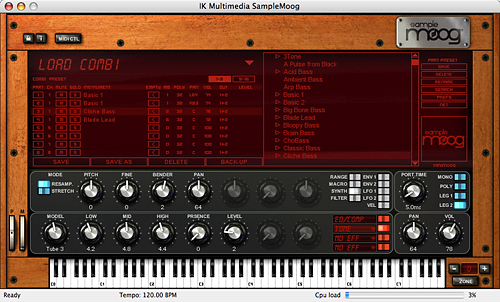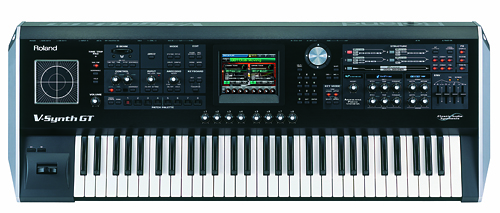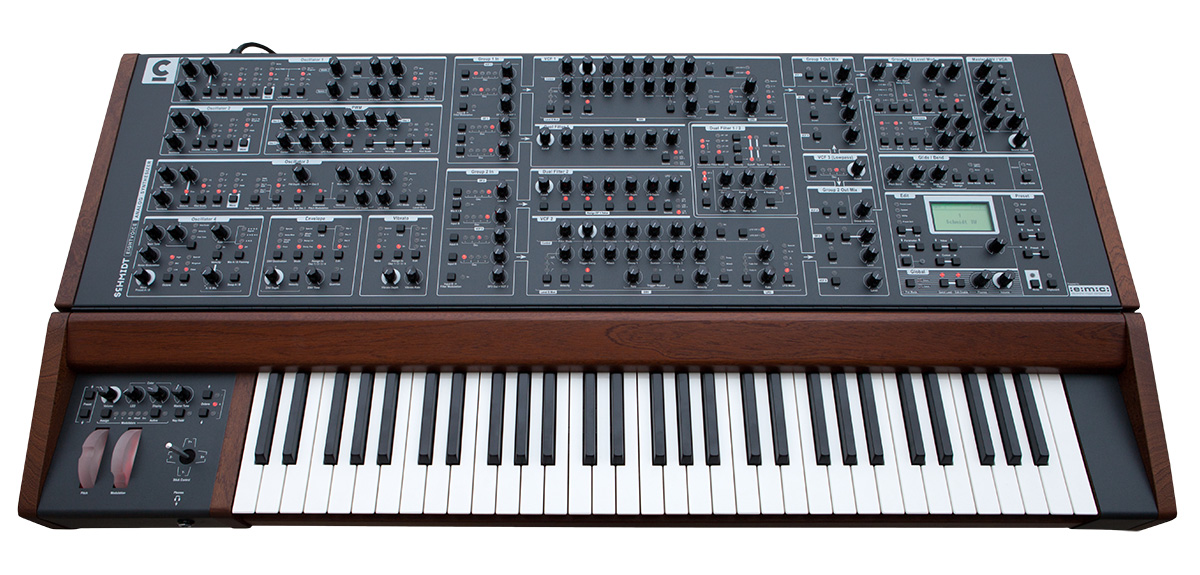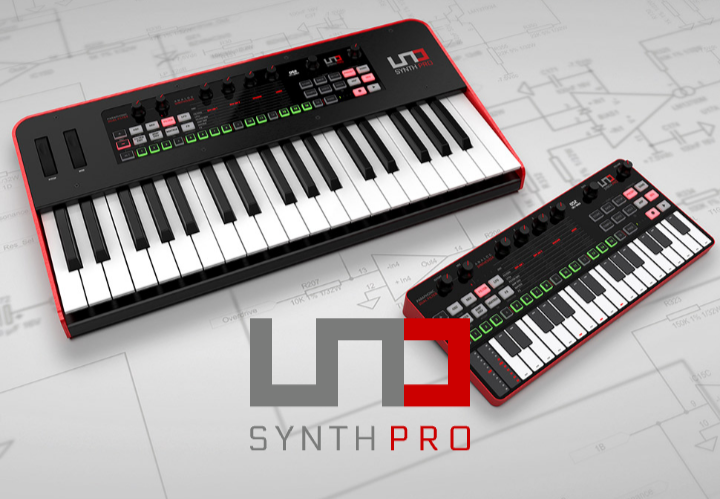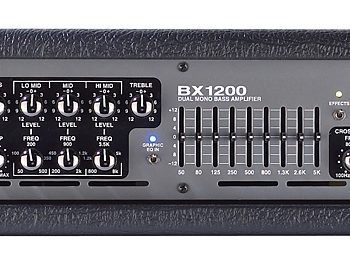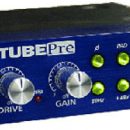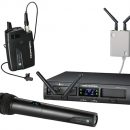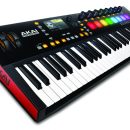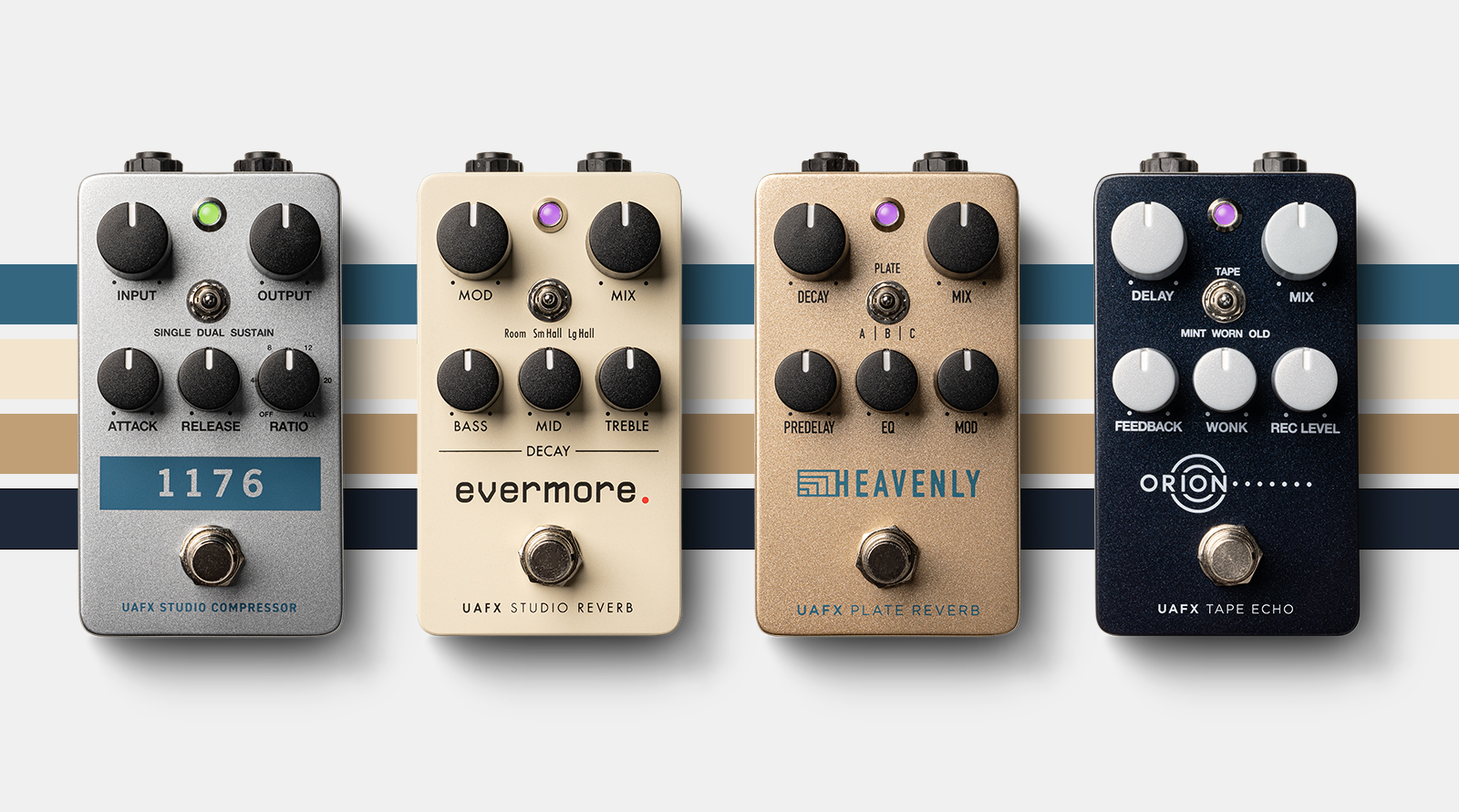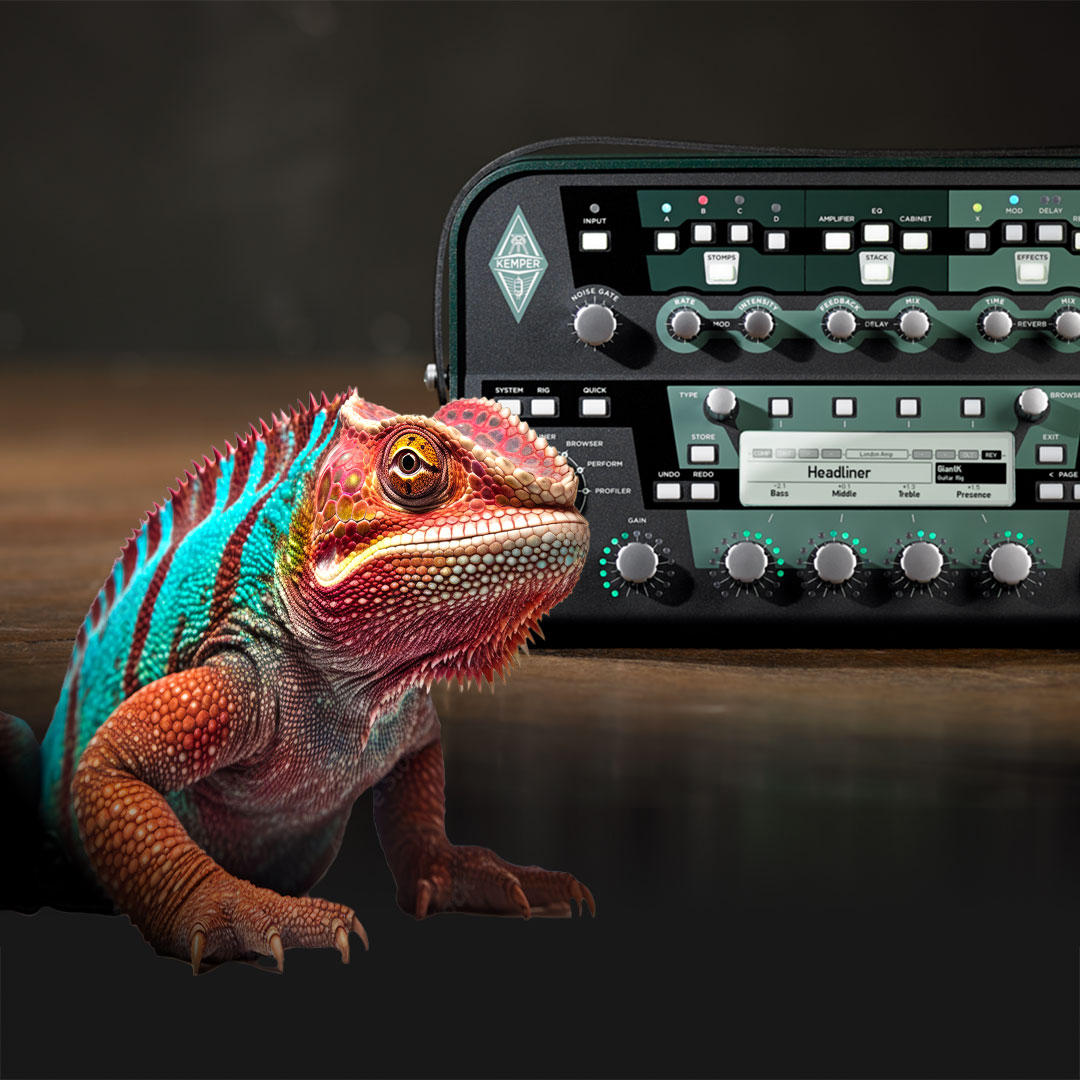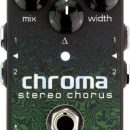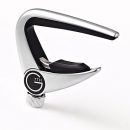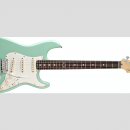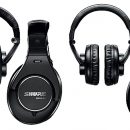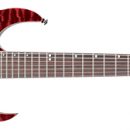 It would be hard to imagine that anyone involved in professional music hasn’t heard of Bob Moog, or at least heard of a Moog synthesizer. As one of the music industry’s pioneers, many classic sounds have been generated from synthesizers bearing the Moog name.
It would be hard to imagine that anyone involved in professional music hasn’t heard of Bob Moog, or at least heard of a Moog synthesizer. As one of the music industry’s pioneers, many classic sounds have been generated from synthesizers bearing the Moog name.
Unfortunately, some of those classic sounds are from synths that are… well, classic, meaning they’re big, heavy, sometimes unstable, and generally less gig-worthy than more modern synths. So do you take some of Barry Bond’s steroids to carry those old ‘boards around?
| Category | Value | Rating |
| Features | 20% | |
| Usability | 25% | |
| Sound | 25% | |
| Documentation & Support | 10% | |
| Price | 20% | |
| OVERALL RATING = 3.6, which earns it a WIHO Award! 3.6 stars or better: Outstanding, WIHO Award 3 stars or better: Worth considering 2 stars or better: Suited to specific needs 1 star or less: Not recommended |
||
IK Multimedia, working in cooperation with Moog Music and Sonic Reality, has created an interesting alternative that is refreshingly light in weight but robust in features. SampleMoog delivers sixteen classic Moog synthesizers, 1,700 sampled sounds, sixteen-part multitimbral performance, effects patching, and resampling, all in one tidy package. Based on the SampleTank 2.5 engine, SampleMoog uses samples as oscillator waveforms to recreate timeless Moog sounds or to create new waveforms of your own.
Don’t be dismayed that SampleMoog uses sampled sounds instead of modeling. SampleMoog includes a new feature called STRETCH (Sample Tank 2 Time Resynthesis Technology) that essentially forces the sample to be routed as SampleMoog's Oscillator Waveform.
This avoids a common problem in sampled sounds such as the sample speeding up with high notes and slowing down with lower notes (unless, of course, you want that effect, which you can choose deliberately). You still have control over most of the important synthesizer controls including ADSR (Filter & Envelope) and a very Moog-like filter (6dB/12dB/24dB). You even have a BPM-syncable Low Frequency Oscillator and thirty-two programmable DSP effects — everything, from simple reverb to guitar cabinets and phasers, all of which can be layered up to three at a time.
This software may not fit every Moog-lover’s needs. Hard-core sound designers looking to tweak the tiniest detail parameters might be better served with a general-purpose soft synth or a modeled Moog product. But on the flip side of this, SampleMoog can sound better than a model at times since it is sample-based, and with the ability to stack multiple Moogs on top of each other in a layered sound, you essentially have immediate access to a sixteen-oscillator Moog synth!
For those players simply craving access to “typical” Moog sounds, but still with a great deal of control and authenticity, and enhanced features not present in the classic hardware, your product search may likely end here, and that’s not a bad thing at all!
Features
SampleMoog offers an impressive instrument palette. Essentially the entire Moog history is represented! Not only are classic synths reincarnated in virtual form, but even the latest generation Moog synths are here. The full list includes:
- Modular Moog 3C
- Modular Moog 15
- Modular Moog 55
- Minimoog Model D
- Polymoog
- Taurus 1
- Prodigy
- Multimoog
- Vocoder
- Concertmate MG-1
- Source
- Rogue
- Memorymoog
- Etherwave Theremin
- Minimoog Voyager
- Little Phatty
More than four gigabytes of samples are utilized by over 600 multi-sampled sounds ready to play from over 1,000 preset patches, enough to keep you busy for quite some time.
Other notable product facts and features include:
- sixteen part multitimbral, up to 256 note polyphony (depending on your computer’s configuration/performance)
- Stand-alone and plug-in modes for VST, AU, RTAS on Mac/PC
- Two synth engines (Resampling and IK Multimedia’s new STRETCH engine)
- Thirty-two built-in effects with up to four multi-effects per part, with BPM sync
- Synth controls with Mono/Poly/Legato modes offering selectable legato, two LFOs, two envelopes, syncable LBF/BPF/HPF filters, Velocity, Range and Macro controls
- Sounds can be read by SampleTank
The included effects are borrowed from some of IK Multimedia’s other products such as T-RackS and the original version of AmpliTube. While a purist may feel like that’s not part of the pure Moog sound, the reality is that many players run their Moog synths through effect pedals and other assorted effects. It’s nice having an assortment of effects built-in: reverbs, envelope filters, wah, flanger, tremolo, slicer, and more.
On the subject of system requirements, these are clearly broken down on IK Multimedia’s website, and an older dual-G4 processor equipped Mac is still powerful enough to run this application/plug-in.
Unlike one of our other recently reviewed virtual instruments that required nearly forty gigabytes of disk space, SampleMoog comes on two DVDs that only take up four gigabytes of space.
Usability
We installed SampleMoog on a Power Macintosh G4 dual 1.42 GHz and tested both the stand-alone version and RTAS plug-in (using Digidesign Pro Tools LE 7.3 as a host connected to a KORG Triton LE keyboard as a controller). Installation and product registration was very easy: no USB dongle needed! Woo-hoo!
We are happy to report that unlike some other plug-ins, SampleMoog worked very well on our older dual-G4 system without any problems. IK Multimedia’s system requirements were on the money, and there were never any glitches, sound distortion, or dropouts. Given that countless studios are still running on older G4 systems, it was nice to find a soft synth that didn’t drain all of our available computer resources.
So how do you use the darn thing?
Those experienced with SampleTank will be very comfortable with the familiar interface. However, as with other IK instruments based on SampleTank (such as Miroslav Philharmonik), there are some instrument-specific tweaks. For example, SampleMoog also includes a very Moog-sounding filter, with dual AHDSR envelopes and dual five-waveform LFOs (triangle/square/saw/sine/random). One envelope is dedicated to amplitude; the other has separate depth controls for filter and pitch. One LFO has depth controls for Level, Pitch, and Filter, with delay; the other has no delay, but adds another depth control for Pan. Velocity can affect Amp, Filter, Pitch, Resonance, LFO1 Depth, and Envelope 2 Sustain.
The user/graphical interface is very easy to navigate. On the left side is a list of the different patches (up to sixteen) that make up the Combi (combination) that you are using. These combis can be created by simply selecting a preset from a nearby pull-down menu, organized by type (lead, pad, bass, miscellaneous, pluck), or by grabbing individual patches from the complete list on the right side of the screen.
The right side of the patch listing is particularly cool since it organizes the sounds based on the instrument they came from. As you select each one, a small photo of the instrument appears in the corner (i.e., Theremin, Minimoog, etc.). While not essential to usability in any particular way, we thought this added a nice historical perspective. We appreciated that the instruments displayed the year they were introduced (1972 Modular Moog, 2006 Little Phatty, etc.). And, you can layer your sounds from all the eras, which would be pretty darn hard to do with the real instruments — especially those that were made before MIDI was invented!
Below the instrument selection windows are two rows of knobs. The first row controls the range (allows creation of splits and layers), macro (for MIDI assignments), filter (select filter type), LFO1, LFO2, velocity, Envelope 1 and 2, and synth (which allows you to choose which engine is used to generate the sounds).
The row below this is the effects selection area, which includes thirty-two choices of distortion, chorus, pan, flanger, preamp, tremolo, delay, and a number of other useful effects.
Below this row is a graphical keyboard that you can use if you are bored on an airplane and without access to a small keyboard controller (see our in-flight music tutorial for clever travel options).

The synth engine selector is an interesting feature. Once this button is clicked, other controls appear. For resampling, you have Pitch (changes tuning of the samples in semitones), Fine (more tuning, in cents), Bender (tuning deviation by pitch bender), and Pan. The STRETCH engine allows independent alteration of three sample parameters: Pitch, Tempo/Speed, and Timbre. This allows for control of, for example, the vibrato of a sound, or how the sound changes over time. You even get a control for harmonics, which is useful for vocal or organ-type sounds.
It is not surprising that Moog users value not only analog sound but the ability to shape that sound in real-time — which seems in contrast to a digital, sampled library full of presets. Moog synth layouts are interactive and can produce the sound the player wants, in real-time. Sample packages, even ones as extensive as this, are limited by disk space to certain pre-determined sounds.
The advantage of sampling, of course, is authenticity. However, the trade-off for having those literal recordings of a variety of instruments is less control (as opposed to modeling, which re-creates the sound from scratch).
While SampleMoog does give you access to certain parameters (as listed above), and in our testing generally did a fine job of giving the user control, some sound qualities are simply part of the recording and can’t be altered. The subtle detuning that comes from analog drift might be considered one such example.
There is, however, an interesting consolation: the software also includes a folder full of raw waveforms taken from the Minimoog that you can run through the filters and effects to come up with your own sounds. While we think that this is a great idea, and a wonderful tool for sound creation, those familiar with real hardware versions might sometimes feel limited compared to what you can do on a real Moog.
For example, Gary Numan, one of the first successful popular music artists to feature a synthesizer prominently on his records, was also a Polymoog user, most easily identified by the “Vox Humana” preset. This sound, especially prominent on the track “Cars” and most of the album The Pleasure Principle, became his signature sound in the late ‘70s and early ‘80s. However, to re-create this sound you must use the direct output on an actual Moog to bypass the filter section entirely. This kind of detail is simply not possible on a sample-based instrument that lacks all the physical inputs and outputs for routing.
While we admit it isn’t technically a Moog feature, we would have loved to see an arpeggiator as part of the software. When we used our Triton’s arpeggiator with SampleMoog sounds… that was very cool, and the inclusion would be one way to further enhance the great Moog sounds being generated (but more on the sound coming up).
Sound
We were skeptical at first, to be honest. It is hard enough to virtualize one classic instrument, let alone sixteen. IK Multimedia did an admirable job of keeping the learning curve short, the sound quality high, and keeping the vibe of what makes a Moog… a Moog! And remember, this software isn’t just one Moog. It is essentially a collection of sixteen Moog synths!
While we were not able (unfortunately) to directly compare SampleMoog to all of the hardware counterparts, the Moog sound is definitely here. From the oldest to the newest Moog, IK Multimedia captured it quite well. Anyone who enjoys music created during the past few decades will instantly recognize many of these sounds, and since plenty of modern bands/artists today are using these classic sounds, too, you’ll find a ton of great sounds to use in many styles of playing.
The folks at IK Multimedia really put a lot of effort into delivering authentic Moog sound. Great basses, vocal sounds, pads… it’s all in there. We had a great deal of fun playing the various sounds and waveforms and essentially experiencing musical history. The 1975 Polymoog, for example, took us back to Genesis with Peter Gabriel; the 1978 MultiMoog was reminiscent of ELP. It would be hard to find a sound that wasn’t recognizable as having been used on well-known albums in most, if not all, rock and pop genres.
We were particularly impressed by the theremin sounds — the floating, voice-like and unique quality is captured very well, and easily got some of the creative juices flowing. Other favorites included the Combi “Chinatown,” a multilayered pad sound, and a whimsical touch was the preset, “Another One,” based on a famous bass line from Queen. For classic Depeche Mode fans, the preset “TOM” sounds a lot like the melody sound from “Just Can’t Get Enough.”
The sounds were meticulously sampled and of very high quality. While SampleMoog relies on the choices made by IK’s team regarding what to sample from several decades worth of Moog instruments, their choices are for the most part excellent and are entirely usable in today’s musical context. To our ears, the sounds are worthy of bearing the Moog name.
As mentioned in Usability, there are limitations that can’t be avoided in a sample-based playback engine. Serious sound designers who rely on direct access to all the inputs and outputs and modulation routings that you’ll find on a real Moog hardware box won’t be content with SampleMoog, nor any sample-based implementation of a classic analog synth. But that’s okay — that kind of programming detail and functionality misses the point of this product, which clearly is to provide a broad range of immediately useful, musical-sounding, high-quality sounds that represent sixteen Moog synthesizers. And on these fronts, SampleMoog delivers.
Documentation and Product Support
The manual… is actually written! With photos! We wish more companies did as nice a job as IK Multimedia. Each Moog instrument is detailed, and every control of the program is well explained. There is a tips section as well. Bravo!
Price
SampleMoog ($329 MSRP) can be purchased for under $300. While sampled sounds might provide less opportunity for alteration than modeled sounds, SampleMoog is designed to represent the Moog heritage in a broad collection. One would be hard pressed to find another collection of sixteen Moog instruments all in one package that preserves the essence of Moog sound. We think it does so very well, and without the cost, physical storage, and maintenance needs of the real things.
Other Comments
One of our other keyboards editors, Tony Grund, offered the following tip for creating a "super-phat," detuned, lead/bass sound:
- Set the MIDI channels for parts 1-4 all to the same MIDI channel (Channel 1 in our case).
- Highlight Part 1 and select “Basic 1” from 1970 Minimoog. Do the same for Part 2.
- Pan one part hard left, and one to the right.
- Highlight Part 2 and click the “SYNTH” button, then detune the Fine parameter by a few clicks (we set ours to 8).
- Click on Part 3 and add in “Cliche Bass” from the Minimoog library.
- Drop the volume on Parts 1 & 2 to 74.
- On Part 3 insert the effect “ToneControl” to boost the low tones and add fullness to the sound. Change the model to “Tube 3” and change the Lows and Mids to 4.2 and 4.8, respectively.
- Set the volume for Part 3 at 72.
- For the final sound addition, insert “Blade Lead” from the Minimoog on Part 4.
- Throw a “Chorus” effect on Part 4 and drop the volume down to 72.
Contact Information
IK Multimedia
www.ikmultimedia.com
| Evaluation Short-List |
|

